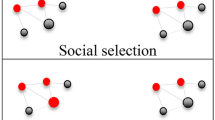Abstract
This paper considers a two-echelon supply chain, which contains one supplier and one retailer. It studies the quantification of the bullwhip effect and the value of information-sharing between the supplier and the retailer under an autoregressive integrated moving average (ARIMA) demand of (0, 1, q). The results show that with an increasing value of q, bullwhip effects will be more obvious, no matter whether there is information sharing or not. When there exists information sharing, the value of the bullwhip effect is greater than it is without information sharing. With an increasing value of q, the gap between the values of the bullwhip effect in the two cases will be larger.
Similar content being viewed by others
References
Baganha MP, Cohen MA (1998) The stabilizing effect of inventory in supply chains. Oper Res 46:72–83
Box GEP, Jenkins GM (1970) Time series analysis, forecasting and control. Holden Day, San Francisco
Cachon GP (1999) Managing supply chain demand variability with scheduled ordering policies. Manage Sci 45:843–856
Chen F, Drener Z, Jennifer KR, Simchi-Levi D (2000) Quantifying the bullwhip effect in a simple supply chain: the impact of forecasting, lead times, and information. Manage Sci 46:436–443
Chen F (1998) Echelon reorder points, installation reorder points, and the value of centralized demand information. Manage Sci 44:221–234
Gavirneni S, Kapuscinski R, Tayur S (1999) Value of information in capacitated supply chains. Manage Sci 45:16–24
Hamilton JD (1994) Time series analysis. Princeton University Press, Princeton
Keller P, Miline A (1999) The effect of (s, S) ordering police on the supply chain. Int J Prod Econ 59:113–122
Lee H, Padmanabhan V, Whang S (1997) Information distortion in a supply chain: the bullwhip effect. Manage Sci 43:546
Lee H, Padmanabhan V, Whang S (1997) The bullwhip effect in supply chains. Sloan Manage Rev 38:93–102
Silver E, Peterson R (1985) Decision systems for inventory management and production planning, 2nd edn. Wiley, New York
Author information
Authors and Affiliations
Corresponding author
Rights and permissions
About this article
Cite this article
Hsiao, J., Shieh, C. Evaluating the value of information sharing in a supply chain using an ARIMA model. Int J Adv Manuf Technol 27, 604–609 (2006). https://doi.org/10.1007/s00170-004-2214-4
Received:
Accepted:
Published:
Issue Date:
DOI: https://doi.org/10.1007/s00170-004-2214-4




